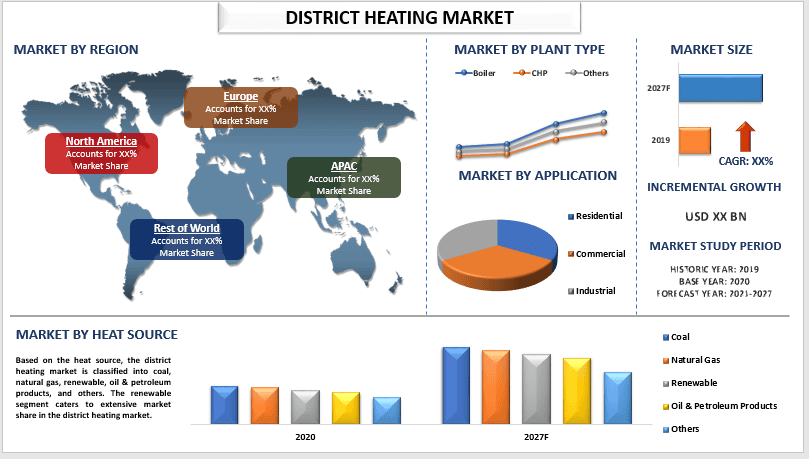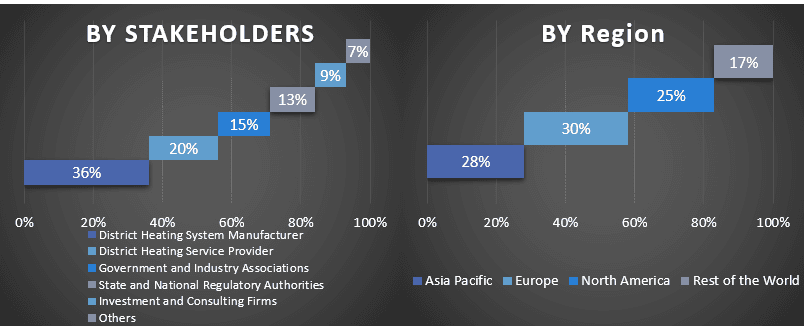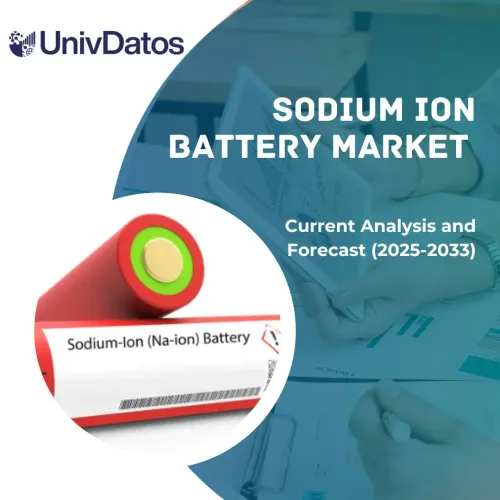- Home
- About Us
- Industry
- Services
- Reading
- Contact Us
District Heating Market: Current Analysis and Forecast (2021-2027)
Emphasis on Heat Source (Coal, Natural Gas, Renewable, Oil & Petroleum Products, And Others), Plant Type (Boiler, CHP, And Others), Application (Residential, Commercial, And, Industrial); and Region/Country

The District Heating Market is expected to witness steady growth of around 4% during the forecasted period. District heating provides a method of delivering thermal energy to buildings (homes and commercial space) in the form of hot water through a distribution network of highly insulated pipelines. Government regulations aimed at reducing greenhouse gas emissions as well as increased awareness about waste recycling will drive the greater demand for district heating in the market. The strict regulations aimed at improving building energy efficiency using sustainable technologies will help the district heating market grow at a rapid pace. Due to its cost-effectiveness and environmental friendliness, the global district heating market has seen substantial growth. Moreover, the rising willingness of governments to use more renewables will be a crucial district heating market trend in the future. For instance: According to IEA, Renewables are already being integrated into the district heating generation and made up 8% of energy inputs for district heat production in 2020. The share of renewables and electricity together should quadruple by 2030.
The global District Heating market was valued at 170 bn in 2021 and expected to grow at a CAGR of more than 3% during the period 2021-2027. District heating systems are an important part of heating sector decarbonization, as they allow for the integration of flexible and clean energy sources into the energy mix, which could be challenging at the individual building level in urban dense areas. However, although many cities are already implementing low carbon district heating solutions, around 90% of global district heat production today still relies on fossil fuels. Factors such as increasing concerns about recycling waste energies along with government subsidies and power taxes will augment the market growth. Moreover, minimal impact on the environment in line with low dependency on conventional fuel for heat generation will complement the business scenario. For instance: According to IEA, Global district heating production was 16 EJ of heat in 2020, jumping 30% from the 2000 level at an annual compound growth rate of ~1.3%. China, Russia, and Europe are responsible for more than 90% of global district heat production, and therefore critically influence the average carbon intensity of district heating.
Fortum, Vattenfall, Engie, Danfoss, NRG Energy, Statkraft, Shinryo Corporation, LOGSTOR, Vital Energi , Kelag are some of the key players in the market. Several M&As along with partnerships have been undertaken by these players to facilitate customers with hi-tech and innovative products/technologies.
Insights Presented in the Report
“Based on a heat source, renewable segment accounted for the majority share in the market in 2020”
Based on the heat source, the district heating market is classified into coal, natural gas, renewable, oil & petroleum products, and others. The renewable segment caters to extensive market share in the district heating market. It is mainly owing to the rising public and government concern about environmental safety that has grown in recent years, power companies have shifted their attention from fossil fuels to renewable sources which would boost the use of renewable energy sources all over the world.
“Amongst plant type, CHP segment is expected to witness highest CAGR during the forecast period”
Based on the plant type, the district heating market is classified into boiler, CHP, and others. The combined heat and power (CHP) segment cater to extensive market share in the district heating market. The combined heat and power (CHP) systems allow producing both electricity and heat for the heating systems. This has been a major component in their growth in recent years. CHO market demand is boosted by improved energy supply efficiency and the use of waste heat and low-carbon renewable energy sources.
“Based on application, an industrial segment expected to witness extensive CAGR during the forecast period”
Based on the application, the district heating market is segmented into residential, commercial, and, industrial. The industrial segment acquired a considerable market share in the district heating market. According to an IEA report, nearly 40% of the heat generated globally in district heating plants goes to the industry sector, as industrial users often require high-temperature heat. Moreover, China leads, with more than 50% of global district heat consumed in its industry sector in 2020, up from around 34% in 2010.
“Asia Pacific to witness significant growth during the forecast period”
The Asia Pacific is expected to hold an extensive share in the district heating market and is expected to grow at an influential rate in the forecasted period as well. It is mainly attributed to the increasing urbanization and rising demand for energy-efficient & cost-effective heating solutions in this region. Also, the governments in the Asia-Pacific region are also collaborating with local companies, which is further boosting the domestic market.
Moreover, the increasing disposable income, growing concerns for CO2 emission, and high consumption of heating and cooling systems are the major factors driving the market’s growth in China. According to the Organization for Economic Cooperation and Development (OECD) models, India and China may witness a seven-fold increase in income per capita by 2060.
Reasons to buy this report:
- The study includes market sizing and forecasting analysis validated by authenticated key industry experts.
- The report presents a quick review of overall industry performance at one glance.
- The report covers an in-depth analysis of prominent industry peers with a primary focus on key business financials, product portfolios, expansion strategies, and recent developments.
- Detailed examination of drivers, restraints, key trends, and opportunities prevailing in the industry.
- The study comprehensively covers the market across different segments.
- Deep dive regional level analysis of the industry.
Customization Options:
Global District Heating market can further be customized as per the requirement or any other market segment. Besides this, UMI understands that you may have your own business needs, hence feel free to connect with us to get a report that completely suits your requirements.
Table of Content
Research Methodology for the Global District Heating Market Analysis (2021-2027)
Analyzing the historical market, estimating the current market, and forecasting the future market of the global district heating market were the three major steps undertaken to create and analyze the adoption of district heating in major regions globally. Exhaustive secondary research was conducted to collect the historical market numbers and estimate the current market size. Secondly, to validate these insights, numerous findings and assumptions were taken into consideration. Moreover, exhaustive primary interviews were also conducted, with industry experts across the value chain of the global district heating market. Post assumption and validation of market numbers through primary interviews, we employed a top-down/bottom-up approach to forecasting the complete market size. Thereafter, market breakdown and data triangulation methods were adopted to estimate and analyze the market size of segments and sub-segments of the industry pertains to. Detailed methodology is explained below:
Seek More Details About Research Methodology
Analysis of Historical Market Size
Step 1: In-Depth Study of Secondary Sources:
Detail secondary study was conducted to obtain the historical market size of the district heating market through company internal sources such as annual reports & financial statements, performance presentations, press releases, etc., and external sources including journals, news & articles, government publications, competitor publications, sector reports, third-party database, and other credible publications.
Step 2: Market Segmentation:
After obtaining the historical market size of the district heating market, we conducted a detailed secondary analysis to gather historical market insights and share for different segments & sub-segments for major regions. Major segments are included in the report as a heat source, plant type, and application. Further country-level analyses were conducted to evaluate the overall adoption of testing models in that region.
Step 3: Factor Analysis:
After acquiring the historical market size of different segments and sub-segments, we conducted a detailed factor analysis to estimate the current market size of the district heating market. Further, we conducted factor analysis using dependent and independent variables such as increasing demand for energy-efficient and cost-effective heating systems. A thorough analysis was conducted for demand and supply-side scenarios considering top partnerships, mergers and acquisitions, business expansion, and product launches in the District Heating market sector across the globe.
Current Market Size Estimate & Forecast
Current Market Sizing: Based on actionable insights from the above 3 steps, we arrived at the current market size, key players in the global district heating market, and market shares of the segments. All the required percentage shares split, and market breakdowns were determined using the above-mentioned secondary approach and were verified through primary interviews.
Estimation & Forecasting: For market estimation and forecast, weights were assigned to different factors including drivers & trends, restraints, and opportunities available for the stakeholders. After analyzing these factors, relevant forecasting techniques i.e., the top-down/bottom-up approach were applied to arrive at the market forecast about 2027 for different segments and sub-segments across the major markets globally. The research methodology adopted to estimate the market size encompasses:
- The industry’s market size, in terms of revenue (USD) and the adoption rate of the District Heating market across the major markets domestically
- All percentage shares, splits, and breakdowns of market segments and sub-segments
- Key players in the global district heating market in terms of services offered. Also, the growth strategies adopted by these players to compete in the fast-growing market
Market Size and Share Validation
Primary Research: In-depth interviews were conducted with the Key Opinion Leaders (KOLs) including Top Level Executives (CXO/VPs, Sales Head, Marketing Head, Operational Head, Regional Head, Country Head, etc.) across major regions. Primary research findings were then summarized, and statistical analysis was performed to prove the stated hypothesis. Inputs from primary research were consolidated with secondary findings, hence turning information into actionable insights.
Split of Primary Participants in Different Regions

Market Engineering
The data triangulation technique was employed to complete the overall market estimation and to arrive at precise statistical numbers for each segment and sub-segment of the global district heating market. Data was split into several segments & sub-segments post studying various parameters and trends in the heat source, plant type, and application in the global District Heating market.
The main objective of the Global District Heating Market Study
The current & future market trends of the global district heating market were pinpointed in the study. Investors can gain strategic insights to base their discretion for investments on the qualitative and quantitative analysis performed in the study. Current and future market trends determined the overall attractiveness of the market at a regional level, providing a platform for the industrial participant to exploit the untapped market to benefit from a first-mover advantage. Other quantitative goals of the studies include:
- Analyze the current and forecast market size of the district heating market in terms of value (USD). Also, analyze the current and forecast market size of different segments and sub-segments
- Segments in the study include areas of the heat source, plant type, and application.
- Define and analysis of the regulatory framework for the district heating market industry.
- Analyze the value chain involved with the presence of various intermediaries, along with analyzing customer and competitor behaviors of the industry.
- Analyze the current and forecast market size of the district heating market for the major region.
- Major countries of regions studied in the report include Asia Pacific, Europe, North America, and the Rest of the world.
- Company profiles of the District Heating market and the growth strategies adopted by the market players to sustain in the fast-growing market
- Deep dive regional level analysis of the industry
Related Reports
Customers who bought this item also bought










